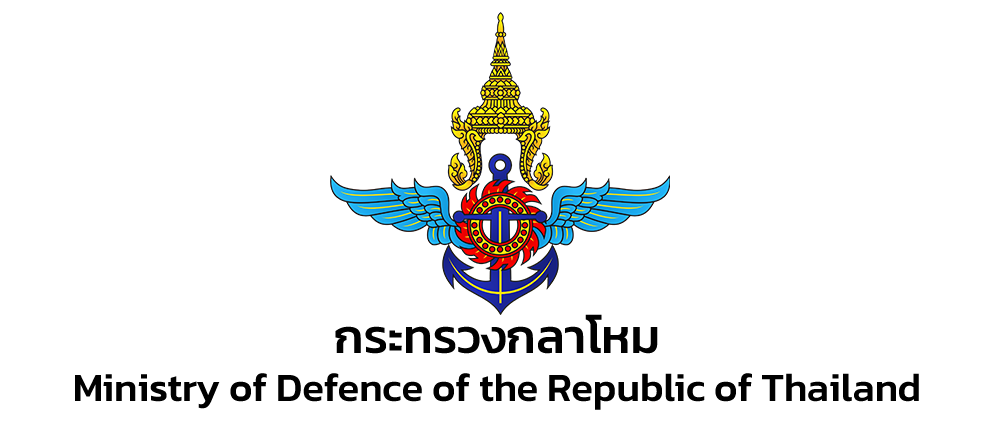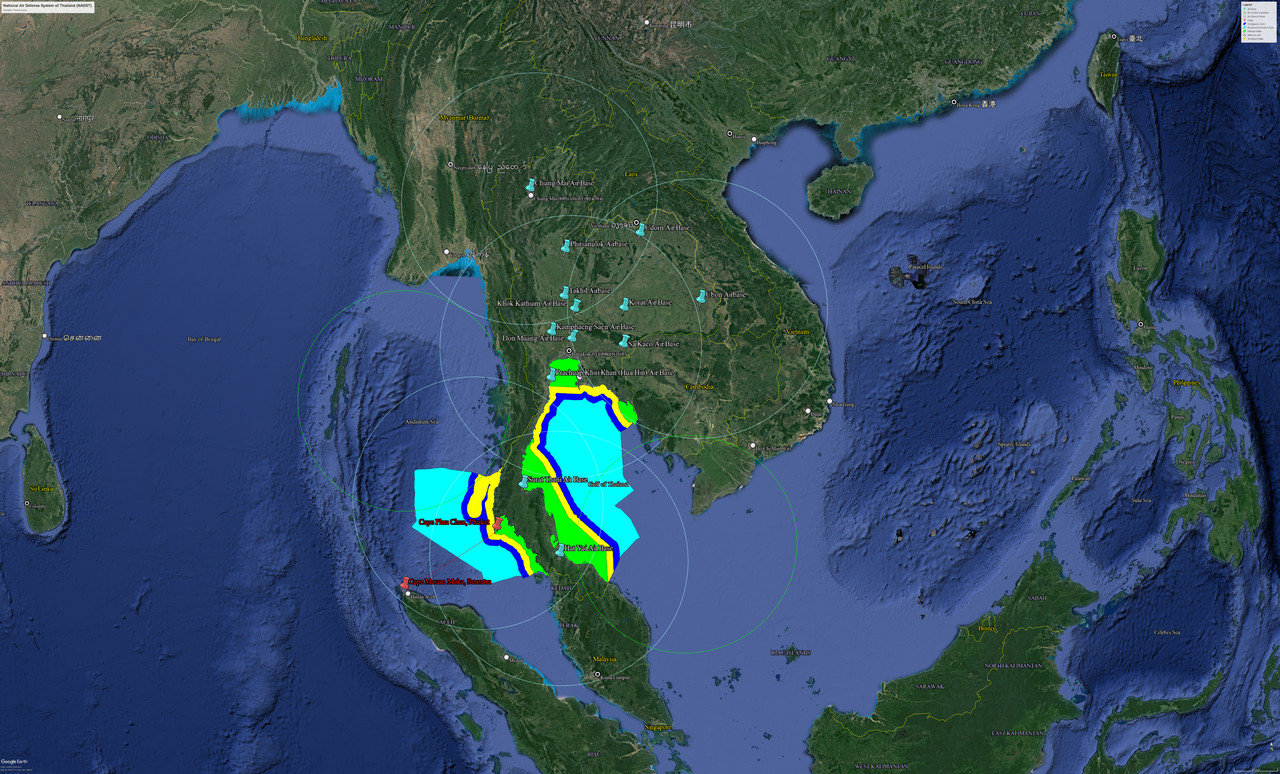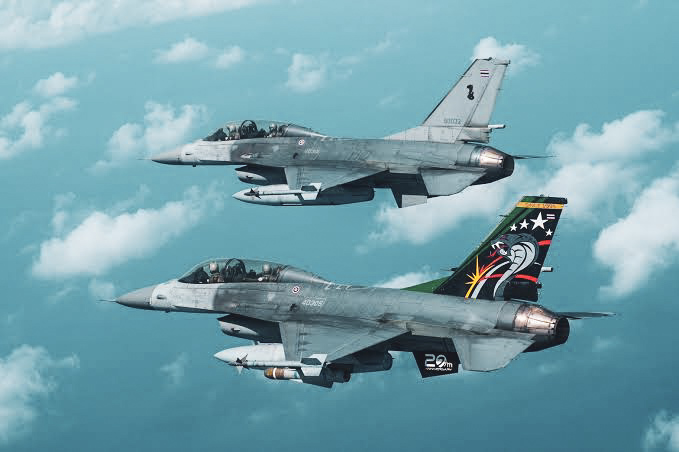- May 4, 2021
- 2,373

Title: Operation Aerial Shield
Document Number: RTAF-AERSE-001/2003
Classification: TOP SECRET
Security Level: Maximum Secure
Date: May 26, 2003
XI. IntroductionX
1.1 Background
With the Thai Navy Coast Guard having already performed its duty to safeguard the Thai and regional waters, the Republic Thai Air Force also has its duty to achieve.
1.2 Objective
The objective of Operation Aerial Shield is for the Republic Thai Air Force's Fighter Squadrons to serve as the Combat Patrol units as stated in the Defense Ministry Document. The overarching objective is to protect the Thai airspace and its interests over the vast sky.
XII. Command and ControlX
2.1 Guidance
This operation is conducted under the guidance of the Commander-in-Chief of the Republic Thai Air Force, Marshal of the Air Force, Thananit Niumtundhi, with support from Defence Minister, Sutin Klungsang, and approval from Prime Minister Thaksin Shinawatra.
XIII. Operational ForcesX
Republic Thai Air Force First Wing
- Khok Kathiam Airbase
- 102nd Fighter Squadron
- [6] Saab JA 37D
- 12 Pilots
- 230 Ground Crews
- [6] Saab JA 37D
- 102nd Fighter Squadron
- Don Muang Airbase
- 103rd Fighter Squadron
- [6] Saab JA 37D
- 12 Pilots
- 230 Ground Crews
- [6] Saab JA 37D
- 103rd Fighter Squadron
- Takhil Airbase
- 405th Fighter Squadron "Dragon"
- [4] F-16AM Block 20 MLU
- [2] F-16BM Block 20 MLU
- 8 Pilots
- 575 Ground Crews
- 405th Fighter Squadron "Dragon"
- Kamphaeng Saen Airbase
- 406th Fighter Squadron "Focus"
- [4] F-16AM Block 20 MLU
- [2] F-16BM Block 20 MLU
- 8 Pilots
- 575 Ground Crews
- 406th Fighter Squadron "Focus"
- Phitsanulok Airbase
- 104th Fighter Squadron
- [6] Saab JA 37D
- 12 Pilots
- 230 Ground Crews
- [6] Saab JA 37D
- 104th Fighter Squadron
- Chiang Mai Airbase
- 401st Fighter Squadron "Thunder"
- [4] F-16AM Block 20 MLU
- [2] F-16BM Block 20 MLU
- 8 Pilots
- 575 Ground Crews
- 401st Fighter Squadron "Thunder"
- Surat Thani Airbase
- 101st Fighter Squadron
- [6] Saab JA 37D
- 12 Pilots
- 230 Ground Crews
- [6] Saab JA 37D
- 701st Air Control Squadron
- [2] Saab 340 AEW&C
- 12 Crews
- 230 Ground Crews
- [2] Saab 340 AEW&C
- 101st Fighter Squadron
- Korat Airbase
- 105th Fighter Squadron
- [6] Saab JA 37D
- 12 Pilots
- 230 Ground Crews
- [6] Saab JA 37D
- 105th Fighter Squadron
- Prachuap Kiri Khan Airbase
- 407th Fighterl Squadron "Python"
- [4] F-16AM Block 20 MLU
- [2] F-16BM Block 20 MLU
- 8 Pilots
- 575 Ground Crews
- 407th Fighterl Squadron "Python"
- Hat Yai Airbase
- 408th Fighter Squadron "Cobra"
- [4] F-16AM Block 20 MLU
- [2] F-16BM Block 20 MLU
- 8 Pilots
- 575 Ground Crews
- 702nd Air Control Squadron
- [2] Saab 340 AEW&C
- 12 Crews
- 230 Ground Crews
- [2] Saab 340 AEW&C
- 408th Fighter Squadron "Cobra"
- Udorn Airbase
- 402nd Fighter Squadron "Hunter"
- [4] F-16AM Block 20 MLU
- [2] F-16BM Block 20 MLU
- 8 Pilots
- 575 Ground Crews
- 402nd Fighter Squadron "Hunter"
- Ubon Airbase
- 403rd Fighter Squadron "Sunny"
- [4] F-16AM Block 20 MLU
- [2] F-16BM Block 20 MLU
- 8 Pilots
- 575 Ground Crews
- 403rd Fighter Squadron "Sunny"
- Sa Kaeo Airbase
- 404th Fighter Squadron "Mosquito"
- [4] F-16AM Block 20 MLU
- [2] F-16BM Block 20 MLU
- 8 Pilots
- 575 Ground Crews
- 404th Fighter Squadron "Mosquito"
XIV. ExecutionX
4.1 Initial Deployment
All personnel will be reported to the respective base with all necessary equipment per the Defense Ministry documents.
4.2 Communication
Effective communication among all the units must be maintained. Any unidentified or suspicious activity must be reported to the command center immediately.
4.3 Rules of Engagement
Engagement will be per the established Rule of Engagement (ROE) with the application of Increased Vigilance (IVG) and international laws. The use of force must be proportionate, and only used in self-defense or to deter identified threats after all non-lethal methods have been exhausted.
4.4 Support
Logistical support, including fuel, supplies, and maintenance, will be provided by the respective air bases.
XV. CoordinationX
5.1 Inter-agency
Liaise with various agencies such as the Marine Police, Customs Department, air traffic control, Thai police, civilian airlines, and Fisheries Department to ensure maximum coverage and sharing of intelligence.
5.2 International
In case any foreign aircraft are involved, contact must be established with the respective embassies or consulates and the situation must be reported to the Ministry of Foreign Affairs.
XVI. ConclusionX
6.1 The Ministry of Defense has mobilized the necessary resources to secure the airspace of Thailand and the national interest to ensure the interest and safety of the Thai People. Through the deployment of Operation Aerial Shield assets and with the support of inter-agency cooperation, the mission of safeguarding the sovereignty and security of Thailand's maritime domain will be executed.
6.2 Continuous assessment of the operation will be done to adjust the deployment and strategy as necessary.
Approving Authority:
[Signature]
Marshal of the Air Force Thananit Niumtundhi
Commander-in-Chief, Republic Thai Air Force
[Signature]
Gen. Chavalit Yongchaiyudh
Defence Minister
[Signature]
Thaksin Shinawatra
Prime Minister, Republic of Thailand
Document Clearance:
The Office of the Prime Minister
The Ministry of Foreign Affairs
The Ministry of Interior
The National Intelligence Agency
The Republic Thai Air Force Command Center
The Republic Thai Navy Command Center
The Republic Thai Armed Forces Special Warfare & Operation Command
Distribution List:
The Office of the Prime Minister
The Ministry of Foreign Affairs
The Ministry of Interior
The National Intelligence Agency
The Republic Thai Air Force Command Center
The Republic Thai Navy Command Center
The Republic Thai Police
The Republic Armed Forces Headquarters
The Republic Thai Air Defense Command
The Naval Special Warfare Command
The Air Force Security Force Command
Last edited:





